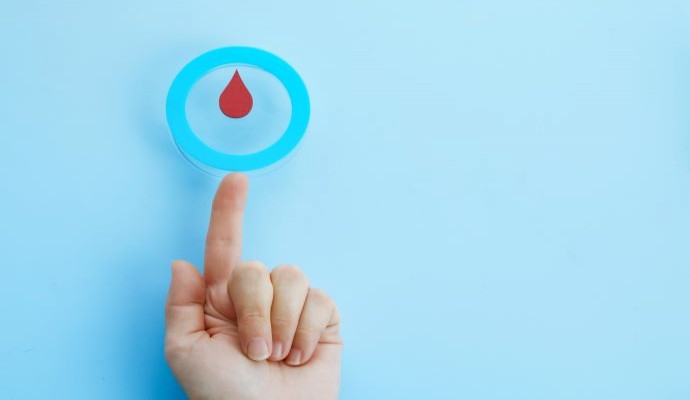mHealth Strategy Improves Diabetes Outcomes Among Black, Latino Patients
An intervention led by clinical pharmacists and health coaches using mHealth tools improved blood glucose levels among type 2 diabetes Black and Latino patients.

Source: Getty Images
- An mHealth intervention delivered by clinical pharmacists and health coaches helped improve blood glucose levels among Black and Latino adults with type 2 diabetes, according to a new study.
Published in JAMA Network Open, the study aimed to assess whether clinical pharmacists and health coaches using mHealth tools, such as telehealth and text messaging, could help improve hemoglobin A1c (HbA1c) levels among Black and Latino populations with type 2 diabetes.
About 37.3 million people had diagnosed or undiagnosed diabetes in 2019, according to the latest data from the Centers for Disease Control and Prevention (CDC). Among men and women, the prevalence of diagnosed diabetes was highest among American Indians and Alaska Natives (14.5 percent), followed by non-Hispanic Black people (12.1 percent) and people of Hispanic origin (11.8 percent).
The mHealth intervention assessed in the study includes remote support from clinical pharmacists via telehealth, including a review of glucose levels and medication changes, and health coach support, such as addressing barriers to medication use and assisting pharmacists in medication reconciliation and telehealth, which was provided in person at patients’ homes and through phone calls and text messaging. Usual care included routine care from patients’ primary care physicians, including medication reconciliation and adjustment.
The study included 148 Black and 73 Latino patients with type 2 diabetes and HbA1c levels above 8 percent seeking care at an academic medical center in Chicago. The patients, aged 21 to 75 years, were enrolled from March 23, 2017, to January 8, 2020.
Of the 221 study participants, 109 patients were randomized to the intervention group. This group received the mHealth intervention for one year, followed by monitored usual care for another year. The rest of the participants were placed in the waiting list control group, which received usual diabetes care for one year, followed by the mHealth intervention for a year.
Researchers found that HbA1c levels improved by a mean of −0.79 percentage points in the intervention group compared with a mean improvement of −0.24 percentage points in the waiting list control group over the first year. In the second year, the waiting list control group received the intervention and experienced improved HbA1c levels, while the initial intervention group maintained their improved levels.
“Based on these findings, this mHealth driven intervention may be considered an effective approach to improving blood glucose management in racial and ethnic minority patients with primary care access in urban environments,” the researchers wrote.
mHealth tools are increasingly being employed in diabetes care, with largely positive results.
In October 2022, Ochsner Health published findings from a review of its digital health pilot program targeting hypertension and type 2 diabetes outcomes among Medicaid beneficiaries.
The program leveraged analytics to create personalized care plans for patients and provided them with a digital device to send vital signs readings to a care team for regular review. Between its launch in 2020 and the review in 2022, the program served 4,400 patients.
The review results showed that about 59 percent of patients with poorly controlled diabetes reached a control level when enrolled in the Diabetes Digital Medicine Program.
However, research has also shown that boosting mHealth uptake among patients depends on the useability of the tools provided.
According to a study by the Regenstrief Institute, Indiana University Richard M. Fairbanks School of Public Health, and Indiana University School of Medicine, type 2 diabetes patients want self-management applications that are easy to use, inclusive of patient-friendly terminology, and support the ability to reconfigure insulin dosage.
